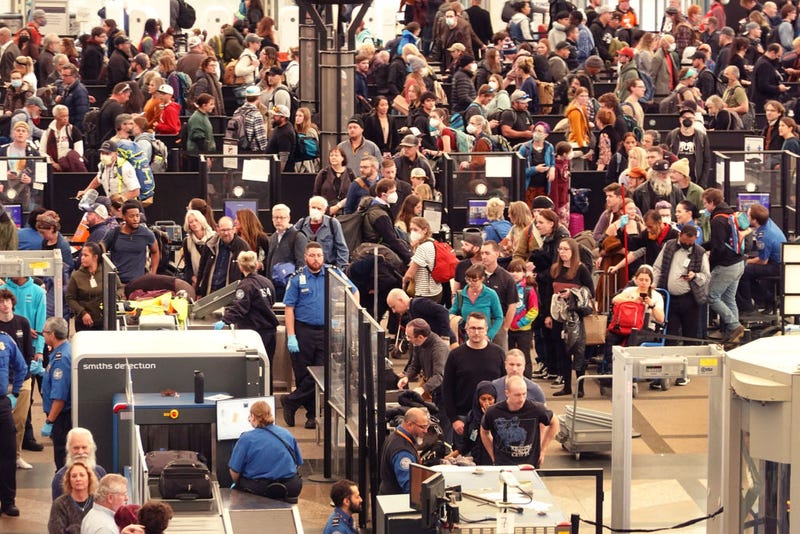
This year's holiday travel season will be one for the record books.
According to AAA's 2022 Year-End Holiday Travel Forecast, this holiday season will be the third busiest since it began tracking in 2000.
An estimated 112.7 million people are expected to travel 50 miles or more during the holidays, from December 23 to January 2. That's around 3.6 million more than last year and closing in on pre-pandemic numbers.
"This year, travel time will be extended due to Christmas Day and New Year's Day falling on Sundays," Paula Twidale, AAA’s Senior Vice President of Travel, said in a statement. "With hybrid work schedules, we are seeing more people take long weekends to travel because they can work remotely at their destination and be more flexible with the days they depart and return."
Nearly 102 million Americans are expected to travel by driving -- about 2 million more drivers compared to 2021. AAA says travel by car this year is on par with 2018 but shy of 2019 when 108 million Americans drove out of town for the holidays, the highest year on record.
About 7.2 million are expected to fly -- a 14% increase over last year. AAA expects the number of people taking holiday flights this year will come close to matching 2019 when 7.3 million Americans traveled by air.
"More people are taking to the air to maximize the time spent at their destination," Twidale said. "Conversely, if the travel distances are reasonable and more than one or two people in the household are taking the trip, it may be more cost-effective to drive rather than buy multiple air tickets, rent a car, and spend too much money before the fun even begins."
As for other modes of transportation, AAA estimates travel by bus, rail, and cruise ship will rise to 3.6 million this holiday season, a 23% increase from last year and nearly 94% of 2019’s volume.
For those traveling by car, the most congested days on the road to be Friday before Christmas, December 27 and 28, and on Monday, January 2, as travelers mix with commuters, according to transportation analytics provider INRIX. In major metros, especially in Los Angeles and New York City, drivers could experience double the typical delays. Nationwide, drivers could see travel times up to 25% longer.
LISTEN on the Audacy App
Sign up and follow Audacy
Facebook | Twitter | Instagram

